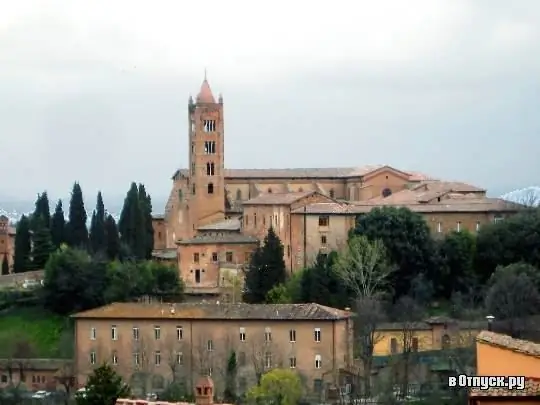
Description of the attraction
The Basilica of Santa Maria dei Servi, also known as San Clemento, is a church in Siena built on the site of a temple acquired in 1234 by the Servite order and attached to a new monastery. Servites arrived in Siena in the first half of the 13th century and initially settled outside the city. But soon the commune government allowed them to build a new church for themselves within the city walls on the site of the already existing temple of San Clemento. Construction work progressed slowly and spanned nearly three centuries. Only in 1533 the new church was consecrated.
The facade of Santa Maria dei Servi, on which work began in the 15th century, was never completed. Made of bricks, it is decorated with a round rosette window and two portals. The nearby 13th-century bell tower, originally built in the Romanesque style, was significantly redesigned in the following centuries - the last reconstruction was carried out in 1926 and gave it a similarity to the bell tower of the Cathedral of Siena. Inside, the church has the shape of a Latin cross with a central nave and two side chapels - the interior is made in the Renaissance style. The columns dividing the side-altars are notable for their carved capitals. The transept and apse have characteristic Gothic features as they were built in the middle of the 14th century. In 1750, a wide staircase was added leading to the inside of the church.
Among the works of art that adorn the basilica, one can name the image of the Madonna del Bordone, painted by Coppo di Marcovaldo and the only one with his signature, "The Birth of Mary" by Rutilio Manetti, a huge painted cross by Niccolò di Senya, altarpiece, numerous frescoes with scenes from life John the Baptist and Evangelists, etc. Most of the side chapels of the church were stylistically altered at the beginning of the 20th century and acquired neoclassical features.






